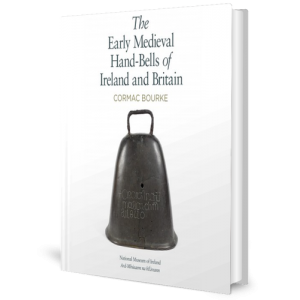Hand-bells are emblematic of early Christianity in Ireland, Scotland and Wales. Produced between the fifth century and the twelfth, they survive in large numbers and were used originally to regulate monastic time and to punctuate the liturgy. Several are attributed to specific saints ― including Patrick and Columba (Colum Cille) in Ireland, Kentigern (Mungo) in Scotland and David in Wales. This two-part book brings together for the first time all the hand-bells that exist or are known to have existed in Ireland and Britain. The first part deals with the morphology, production and distribution of bells, with their archaeological and historical contexts and with their enduring significance in late medieval times. The second part is a catalogue of all existing and recorded bells, offering both physical descriptions and individual case histories.
Cormac Bourke was a curator in the Ulster Museum for 26 years. He specialises in the study of early insular Christianity and has published widely on medieval metalwork and on the archaeology of saints and their relics.
Copyedited by Emer Condit of Archaeology Ireland. Designed by Fiachra McCarthy, designer of the award-winning Solar Bones and Notes to Self.
Published in association with the National Museum of Ireland
| Details | |
| Author | Cormac Bourke |
| Publication Data | Published December 2020, hardback, 708 pp, |
| Subjects | Definitive new history from the National Museum of Ireland monograph series |
The Early Medieval Hand-bells of Ireland and Britain
- ISBN: 978-0-901777-88-1
- Author(s): Cormac Bourke
- Availability: In Stock
-
€50.00

